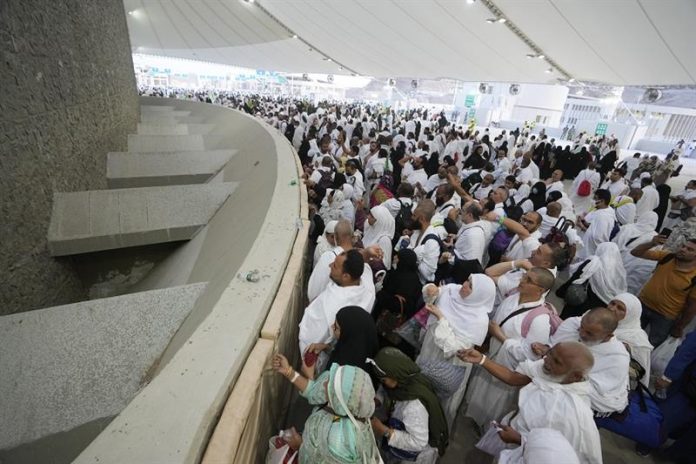MINA, Jun 29 (APP): The Hajj pilgrims performed the stoning ritual on Thursday, the first day of Ayam-e-Tashreeq, at the giant pillars symbolizing Shaitan in Jamarat, Mina, as part of the frequently repeated rituals of Hajj, and the pilgrimage is now nearing its conclusion.
Wearing normal dress after exiting from the ihram the previous day, Hajj pilgrims began the act of stoning the devil on Wednesday, targeting Jamarat Al-Aqba in Mina.
Stoning at Jamarat is a pivotal and frequently repeated ritual of the Hajj pilgrimage, symbolizing its culmination.
Pilgrims perform the ritual at Jamarat Al-Aqba (largest pillar) on the first day of stoning, known as the Day of Sacrifice.
During Ayam-e-Tashreeq, which are the three days following Eid Al Adha, pilgrims continue their ritual by engaging in the stoning ceremony. This ceremony involves throwing seven stones at three pillars: the small pillar (Jamarat Al-Sugra), the medium pillar (Jamarat Al-Wusta), and the largest pillar (Jamarat Al-Aqba). The pilgrims repeat this act seven times at each pillar, symbolizing their strong rejection of the devil and their unwavering resolve to resist temptation.
This significant ritual, marking the culmination of the Hajj pilgrimage, takes place just outside Makkah.
Multiple paths were allocated on all the levels of the Jamarat Bridge Complex to ensure the smooth flow of pilgrims’ movement.
The stoning ritual during Hajj is the riskiest episode, as tens of thousands of pilgrims gather in an enclosed space, causing congestion and jostling. The pillars, representing the location where the devil tempted Hazrat Abraham (AS) against sacrificing his son Hazrat Ismael, (AS), serve as the focal point. Each stone thrown symbolizes a rebuke to the devil and reflects the pilgrims’ determination to resist temptation.
A significant number of Saudi security personnel, healthcare professionals, and volunteers are being mobilized in and around the Jamarat Complex with the purpose of safeguarding the well-being and safety of the pilgrims. Their presence aims to facilitate the smooth progress of the pilgrims and ensure the proper execution of the stoning ritual while prioritizing their health and safety.
Saudi authorities carefully monitored the crowds to ensure a hajj without any incidents. “The entire process, from crowd management and the stoning ritual in Jamarat to the Tawaf (circumambulation) around Makkah’s Grand Mosque, was smooth and effortless,” expressed Sadiq Khan, a pilgrim.
Meanwhile, the pilgrims will continue to reside in Mina, a tent city, during the 11th, and 12th of Dhu al-Hijja, as part of their Hajj pilgrimage.
After performing Rami, the pilgrims will leave Mina and proceed to Makkah on the evening of the 12th or 13th of the Islamic month of Dhu al-Hijja. Before returning home, the pilgrims will perform Tawaf, a ritual of circumambulating the Kaaba.

